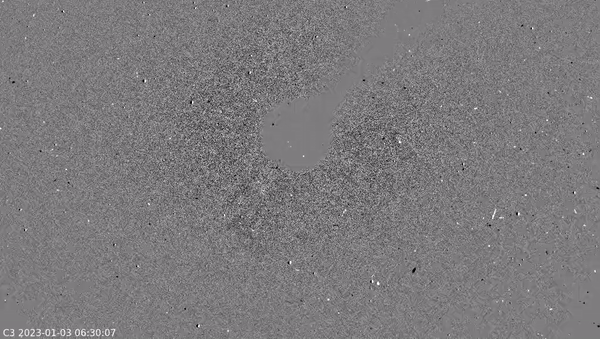Solar observatories on Earth and in space recorded a very powerful flare on the star closest to us. Stunning images show the coronal mass ejection, which is an explosion of plasma and magnetic field from the outer part of the Sun. The event took place on January 3.
Scientist Carl Battams from the US Naval Research Laboratory was so amazed by the flaring that he commented on what he saw on Twitter, calling the dangerous event “very beautiful”.
Ooh, there was a very pretty coronal mass ejection (CME) seen a few hours ago in our @ESA/@NASA/@USNRL SOHO/LASCO C3 images! ☀️???? I think it erupted on the far side of the Sun (aka “behind the limb”), so not Earth-directed AFAIK pic.twitter.com/rXCRu6n8gF
— Karl Battams (@SungrazerComets) January 3, 2023
The scientist shared a black-and-white video taken by the Solar and Heliospheric Observatory (SOHO) spacecraft. The sun itself is covered with a protective shield to better see what is happening around it.

Battams presented the coronal mass ejection in perspective using images from the SOHO large-angle and spectrometric coronagraph (LASCO). The white circle in the center is the real size of the Sun.
And a nice still frame from LASCO C3.
Keep in mind: that white circle in the center is the size of the Sun… so within just a couple of hours, these eruptions are MANY times larger in size than the Sun, and often with masses ~~10^12Kg ????
[orig: https://soho.nascom.nasa.gov/data/REPROCESSING/Completed/2023/c3/20230103/20230103_0930_c3_1024.jpg] pic.twitter.com/JsFnq56rQs
— Karl Battams (@SungrazerComets) January 3, 2023
The Space Weather Prediction Center of the National Oceanic and Atmospheric Administration analyzed and modeled the flare and concluded that the ejected material would probably pass by Earth on January 6, but would not touch our planet. This is good news, because solar eruptions can disrupt the operation of spacecraft, satellites and communication systems on Earth.
The year 2022 was very eventful for the Sun, as it caused strong solar flares, “smiled” at us and created a snake-like plasma formation. It looks like 2023 could be another great year to observe the sun.
Follow us on Twitter to get the most interesting space news in time
https://twitter.com/ust_magazine

